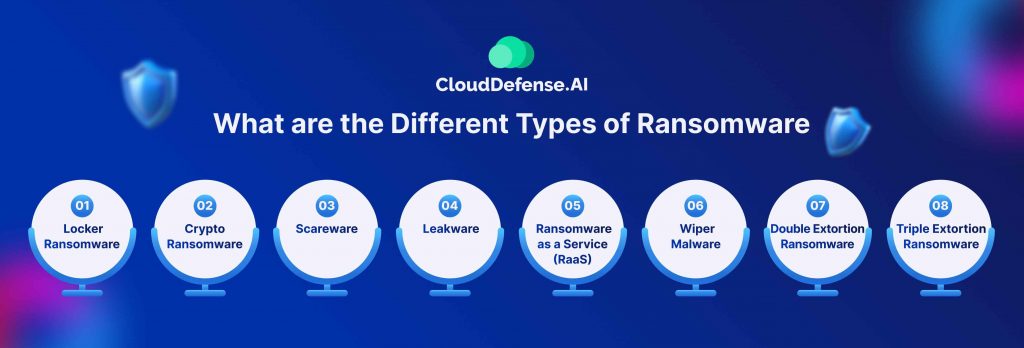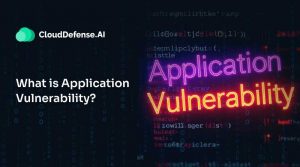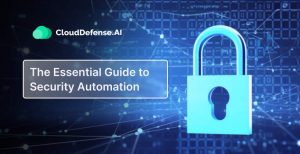Ransomware has become one of the most devastating threats in 2025. We have seen headlines frequently as it’s hitting businesses, hospitals, and even personal devices at an alarming rate. So, what are the most dangerous types of ransomware right now? What do they target, and how can you avoid becoming the next victim?
Here, we’ll break it all down. Understanding these threats could save you from a devastating breach if you are a business leader or someone securing personal data.
What is Ransomware?
Ransomware is a type of malicious software that locks or encrypts your data, demanding payment in exchange for access. It’s like being held hostage—but instead of a person, it’s your own files.
In other words, it’s a type of malicious software (malware) designed to lock you out of your own data or systems. Once it’s in, the attacker demands money (ransom) to restore access.
So, What Exactly Does Ransomware Target?
- Personal Devices: Laptops, phones, and home computers. If you store sensitive data on these, it’s a prime target.
- Businesses of all sizes: Financial records, employee data, customer info. For businesses, losing access to this is disastrous.
- Healthcare Systems: Medical records are a goldmine for attackers. Hospitals can’t afford downtime, so they’re often willing to pay up.
- Governments & Public Institutions: Ransomware can cripple vital services, and these are often high-priority targets.
Why is it so dangerous? Because when it strikes, it stops you from accessing essential data or systems. If you don’t pay, that data might never be recovered.
The Rise of Ransomware Attacks in Recent Years
In the last few years, ransomware attacks have surged globally, with cybercriminals increasingly using these attacks to extort massive sums of money. For example, in 2021, ransomware-related transactions hit an eye-watering $102.3 million per month, according to a Forbes report. And it didn’t stop there—by 2022, the total value of ransomware attacks soared to $2.3 billion.
What does this mean for enterprises? With the rapid evolution of technology, new and more sophisticated types of ransomware are emerging, making them harder to tackle.
So, it’s clear: understanding the different types of ransomware and how they operate is critical for businesses. Only then can they build a strong, proactive security strategy to defend against these evolving threats.
Top 5 Common Types of Ransomware

Here , we’ll walk you through the most common types of ransomware you need to be aware of—and how to protect your organization from these growing risks.
1. Crypto Ransomware
Crypto ransomware is exactly what it sounds like: malware that locks your files and demands a cryptocurrency payment in exchange for the decryption key. These attacks are on the rise, and here’s why you should care.
How It Works:
- Infection Method: Usually, it spreads through phishing emails or malicious attachments. Once it lands on your system, it encrypts your files—making them unreadable.
- Creating Demand: The attacker demands a ransom, typically in Bitcoin or another cryptocurrency, making it hard to trace.
- The Outcome: You’re stuck in a difficult position—pay up, or lose access to your data for good.
Real-World Example:
Remember WannaCry in 2017? It hit over 150 countries, including major hospitals in the UK. These systems were shut down, medical staff couldn’t access patient data, and it caused a major disruption. The attackers demanded Bitcoin payments, and the damage was in the billions. It was a wake-up call for everyone.
Why You Should Care:
- It’s Growing: Ransomware attacks are getting smarter. They’re becoming harder to stop and faster to deploy, so the chances of getting hit keep growing.
- Crypto Makes It Hard to Trace: Cryptocurrency is anonymous, which makes it tough for law enforcement to track the attackers. They know this, which is why it’s become their payment method of choice.
- Impact Can Be Huge: For businesses, losing access to files means downtime, productivity loss, and financial damage. If you’re a healthcare provider or any other critical service, it could be a disaster.
2. Scareware
Scareware is one of the sneakiest types of ransomware out there. It doesn’t encrypt your files like crypto ransomware. Rather, it tries to trick you into thinking your system is infected with a virus or other serious issues. Then, it pushes you to pay for fake software or a service to fix the supposed problem.
How It Happens:
- Pop-ups & Alerts: You’ll see warnings on your screen that your computer has issues, like a virus or security breach. It’s basically designed to look urgent, like a system failure.
- Fake Solutions: You’re prompted to download fake antivirus software or call a fake support number. The goal is to get you to pay for something that doesn’t exist.
Real-World Example:
One of the most common scareware attacks involves fake “system alert” pop-ups. The screen will flood with warning messages that say your computer is at risk, often claiming that personal data is being stolen or that the system will crash. The scammer then offers a fake solution, like software you need to purchase immediately.
Why You Should Care:
- No Actual Threat: Unlike other ransomware, scareware doesn’t actually infect your system. It relies entirely on fear and pressure to get you to pay for something you don’t need.
- Financial Loss: If you fall for it, you’re simply handing over money for nothing. The attacker walks away with your payment, and you’re left with no real fix.
- Easy to Fall For: It’s often hard to tell whether an alert is real or fake, especially when it’s made to look like a legitimate warning from your system.
3. RaaS (Ransomware as a Service)
RaaS (Ransomware as a Service) is a disturbing trend in the world of cybercrime. It’s essentially what it sounds like—ransomware sold as a service to other criminals. Anyone, even without technical expertise, can now launch a ransomware attack.
How It Happens:
- Easy Access to Tools: The RaaS model provides ready-to-use ransomware tools to attackers. These tools can be purchased or rented, often with a share of the ransom as the payment.
- Quick Setup: Once an attacker signs up for a RaaS service, they’re given everything they need to launch an attack, from ransomware code to instructions on how to deploy it.
- Straightforward Attack: The person behind the attack (often referred to as an “affiliate”) sends out the ransomware. If it successfully locks a victim’s files and the ransom is paid, the affiliate shares the payout with the RaaS provider.
Real-World Example:
One of the well-known RaaS operations was REvil. This service allowed cybercriminals to easily carry out ransomware attacks on businesses worldwide. REvil was behind several high-profile attacks, including the one on JBS Foods, a major meat supplier. The attackers were able to quickly encrypt systems and demand a hefty ransom, all thanks to the RaaS model.
Why It’s Potentially Hazardous?
- Low Barrier to Entry: Anyone can become a ransomware attacker, even without technical skills. This makes it easier for cybercriminals to flood the internet with attacks, increasing the overall threat.
- Shared Risk: The more people using RaaS, the more widespread and sophisticated these attacks become. The RaaS model also means attackers don’t have to worry about developing their own malware, lowering the risk for them.
- Big Profits for Cybercriminals: RaaS providers are making millions by selling these services, and that only fuels the growing cybercrime industry.
4. Doxware (or Leakware)
Doxware, also known as leakware, is a particularly harmful form of ransomware. Instead of encrypting your files and demanding money to unlock them, this type of ransomware threatens to expose your personal or sensitive data unless you pay up.
How It Happens:
- Data Theft: The attacker first gains access to your system and steals sensitive information—this could be personal data, business files, or anything that can cause harm if exposed.
- The Threat: Once the data is in the attacker’s hands, they threaten to release it publicly unless a ransom is paid.
- Payment Demand: Like other forms of ransomware, payment is usually demanded in cryptocurrency to ensure anonymity. The attacker might even demand more money if they don’t receive the ransom quickly enough.
Real-World Example:
In 2019, The City of Baltimore was hit with a ransomware attack, and although it was primarily about encryption, the hackers also stole sensitive documents and threatened to leak them. More recently, the Maze Ransomware group made headlines for employing doxware tactics, publishing stolen data online when victims refused to pay.
Why You Should Care:
- Pressure to Pay: Victims face an added level of stress because the threat is immediate and public. It’s not just about losing access to files—it’s about potentially losing your privacy or your company’s secrets.
- Personal & Business Risks: For individuals, the exposure of personal data could lead to identity theft or harassment. For businesses, a data leak can ruin reputations, lead to legal issues, and cause significant financial damage.
- Hard to Prevent: With doxware, it’s not just about securing your files; it’s about protecting the sensitive data that could be used against you. A breach of this nature is often harder to recover from compared to traditional ransomware.
5. Locker Ransomware
Locker ransomware is a type of attack that locks you out of your system entirely. Unlike crypto ransomware, which locks your files but lets you use your computer, locker ransomware locks the entire system, rendering it unusable until a ransom is paid.
How It Happens:
- System Lockdown: The ransomware takes control of your device, preventing you from accessing anything. It can even lock the screen, making it impossible to use your computer at all.
- Ransom Note: Once the system is locked, you’ll typically see a ransom note demanding payment in exchange for unlocking your device.
- Payment Demands: The payment is usually requested in cryptocurrency to maintain anonymity, and failure to pay often results in the system staying locked.
Real-World Example:
In 2020, the Sodinokibi ransomware (also known as REvil) targeted a wide range of industries and used locker ransomware tactics. Many victims found themselves completely locked out of their devices with no access to files or applications. The attackers demanded a ransom for decryption, causing significant downtime for businesses.
Why You Should Care:
- Complete Lockdown: Unlike other ransomware types that only encrypt your files, locker ransomware makes the entire system unusable, stopping you from working until you pay up.
- Potential Business Disruption: For businesses, a single locked device can cause a huge disruption, especially if it’s critical to operations. The longer it takes to resolve, the higher the financial impact.
- High Pressure to Pay: The immediate disruption and inability to use your device can push victims to pay quickly without fully considering the consequences, leading to more successful attacks for the cybercriminals.
What Should You Do If You Fall Victim to a Ransomware Attack?
If you or your business falls victim to a ransomware attack, it’s crucial to know your options. Responding quickly and strategically can minimize damage and help you recover more efficiently. Here’s what you can do:
1. Do Not Pay the Ransom
Paying the ransom may seem like the easiest way out, but it’s often a bad idea. There’s no guarantee that paying will result in your files being decrypted. Cybercriminals may take your money and never unlock your system. Paying also encourages more attacks and can make you a target again in the future.
2. Disconnect from the Network
Once you realize you’ve been hit, the first thing to do is disconnect from any network or the internet. This helps stop the ransomware from spreading further to other systems or devices. Isolating the infected machine prevents the malware from affecting other parts of your network.
3. Contact a Professional
Hiring an experienced cybersecurity team can help you handle the aftermath of a ransomware attack. These professionals can identify the strain of ransomware and provide guidance on how to recover. If you’re a business, cybersecurity experts can perform a forensic investigation to understand how the attack occurred and help prevent future ones.
4. Restore from Backup
If you’ve been backing up your data regularly, restoring from those backups is a viable option. However, make sure your backups are clean. Before restoring, run scans to ensure you’re not reintroducing ransomware into your system.
5. Report to Authorities
In many cases, reporting the attack to local law enforcement is a requirement, especially if sensitive data was exposed. Law enforcement can work with other agencies to track down the cybercriminals and prevent further damage.
6. Prevent Future Attacks
After a ransomware attack, it’s essential to improve your cybersecurity measures. Update your software, patch vulnerabilities, and implement stronger security protocols. For businesses, training employees on how to recognize phishing attempts and secure sensitive data can reduce the risk of future attacks.
How to Prevent Ransomware Attacks
Ransomware is a growing problem. If you want to avoid falling victim, you need to take action. Here’s what you should do to stay ahead of attackers.
1. Keep Everything Updated
You can’t afford to skip updates. Cybercriminals target outdated systems. When you don’t update your software, you’re leaving gaps that attackers can easily exploit. Make updates part of your routine, for both your operating system and applications.
2. Backup Your Data
Think of your backups as your safety net. If ransomware locks you out, your backup is your way out. Keep your backup data offline, so attackers can’t get to it. Regularly test your backups to ensure they’re actually working. If you’re relying on backups to recover, make sure they’re encrypted, too.
3. Use Advanced Threat Protection Solutions
Standard antivirus software isn’t enough anymore. You need next-gen cloud security tools like CloudDefense.AI to stop ransomware-based attacks before it gets to your systems. These solutions look for unusual behavior in real-time, meaning they can block an attack before it causes any damage.
4. Train Employees and Users
The majority of ransomware attacks begin with phishing emails or malicious links. If your team isn’t trained to spot these, you’re opening the door for attackers. Teach them how to recognize threats. Awareness is the first line of defense.
5. Adopt Strong Access Control
Not everyone needs access to everything. Limit who can access critical systems. Using the principle of least privilege means giving employees just enough access to do their jobs. This is one of the easiest ways to contain damage if an attacker gets in.
6. Use Multi-Factor Authentication (MFA)
MFA is a game-changer. It adds a layer of security, even if someone steals a password. This extra step makes it harder for attackers to get into your systems, and it’s one of the easiest ways to protect against unauthorized access.
7. Isolate and Segment Your Network
Don’t let an attacker spread through your entire network. Segment your network so that if one part is compromised, the rest stays safe. This containment approach is crucial for minimizing the damage from an attack.
8. Monitor Your Systems Constantly
The longer you wait to detect an attack, the more damage it does. Set up constant monitoring to catch suspicious activity early. Automated alerts can help you react fast, before a small problem becomes a huge one.
9. Reduce the Attack Surface
Every extra device or service is an opening for attackers. So, minimize the attack surface:
- Make sure all endpoints are secure. Don’t overlook the small stuff—laptops, mobile devices, even IoT devices can be entry points.
- Limit what’s exposed to the internet. Don’t make services public unless absolutely necessary.
- Remove unnecessary software and devices. The fewer things you have running, the fewer things can be exploited.
Conclusion
Ransomware currently serves as one of the biggest weapons for cybercriminals to disrupt business flow and extort money from businesses. As ransomware is getting more sophisticated, more and more cybercriminals are using it as a medium to generate ransom from victims.
Attackers are utilizing various types of ransomware attacks on different enterprises and it is important to develop the security control accordingly. This article takes you through all the common types of ransomware that your organization might come across along with the tips you should take into consideration to prevent such attacks.







